Birds
Birds are a class of warm blooded vertebrates in the class Aves. Aves are characterized as individuals having feathers, toothless beaked jaws, a four-chambered heart and a strong but lightweight skeleton. Aves also all lay hard-shelled eggs. Worldwide there are over ten thousand living species of birds, ranging from the very small bee hummingbird (2.2 in) to the giant ostrich (9ft 2in). Vancouver Island is perfectly situated to be a bird hotspot, many species that migrate up and down coast stop here. Attracting many different species due to the diversity in available habitat, over 450 different types of birds call the island home. Within the park you can see various types of waterfowl, songbirds, birds of prey, woodpeckers and hummingbirds. If you’re in the park, bring your binoculars and see how many different species you can spot!
The Nature house has a large collection of feathers, birds nests, eggs, skulls and taxidermy birds. We are always adding to our collection so check back to see what else we find!
Feathers
Feathers are one of the universal characteristics amongst Aves. They are incredibly strong, lightweight and flexible, and are highly unique to each species. Feathers are considered to be the most complex integumentary (organs which form the outermost layer of the body) structure found in vertebrates. Most birds have a variety of different feather types, each with their own specific purpose: down for insolation, bristles to protect the eyes and nose, contour feathers to shape the body, wing feathers for flight and tail feathers which act as a rudder.
Feathers are as varied in their appearance as they are in their uses. Each feather can be patterned with many different colours that can vary depending on their location on the bird. The variation of colour and pattern of the feathers can be for camouflage, courtship displays and displays of aggression.
Feathers have been used by humans for numerous things including utilitarian, decorative, cultural and spiritual uses. Feathers are commonly used in bedding, sleeping bags, mattresses and winter clothing due to their heat trapping abilities. They have been used for fletching arrows and quill pens. The wide variation in colour and pattern makes them popular in fashion. Bird plumage also commonly serves as a cultural symbol, for example the bald eagle in the United States, the hawk in ancient Egypt and the Greek myth of Icarus. Eagles have great spiritual importance to many First Nations groups. Widely considered the messenger of the Creator, an Eagle feather is the link between the people and the Creator.
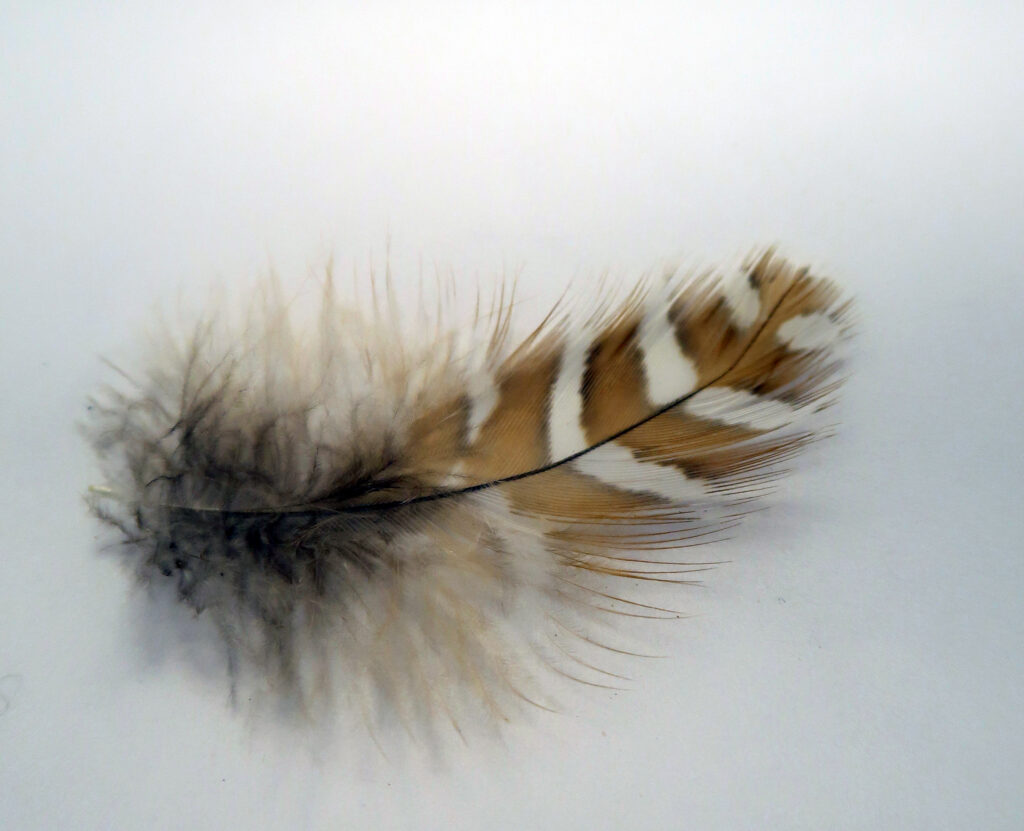
Barred Owl Feather
(Strix varia)
Barred owls have mottled brown and white plumage and very dark eyes. They have lighter feather on their chest with brown stripes and darker brown feathers on their wings and tails.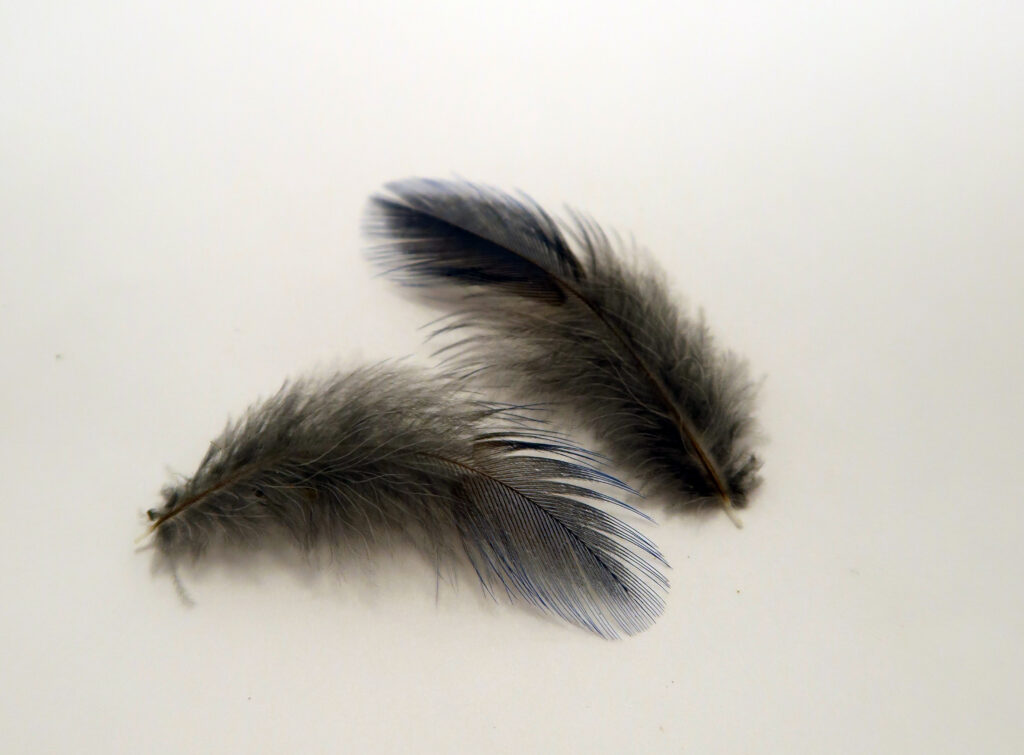
Blue Jay Feather
(Cyanocitta cristata)
Blue Jays are native to Eastern North America. They are known for being noise, bold and aggressive.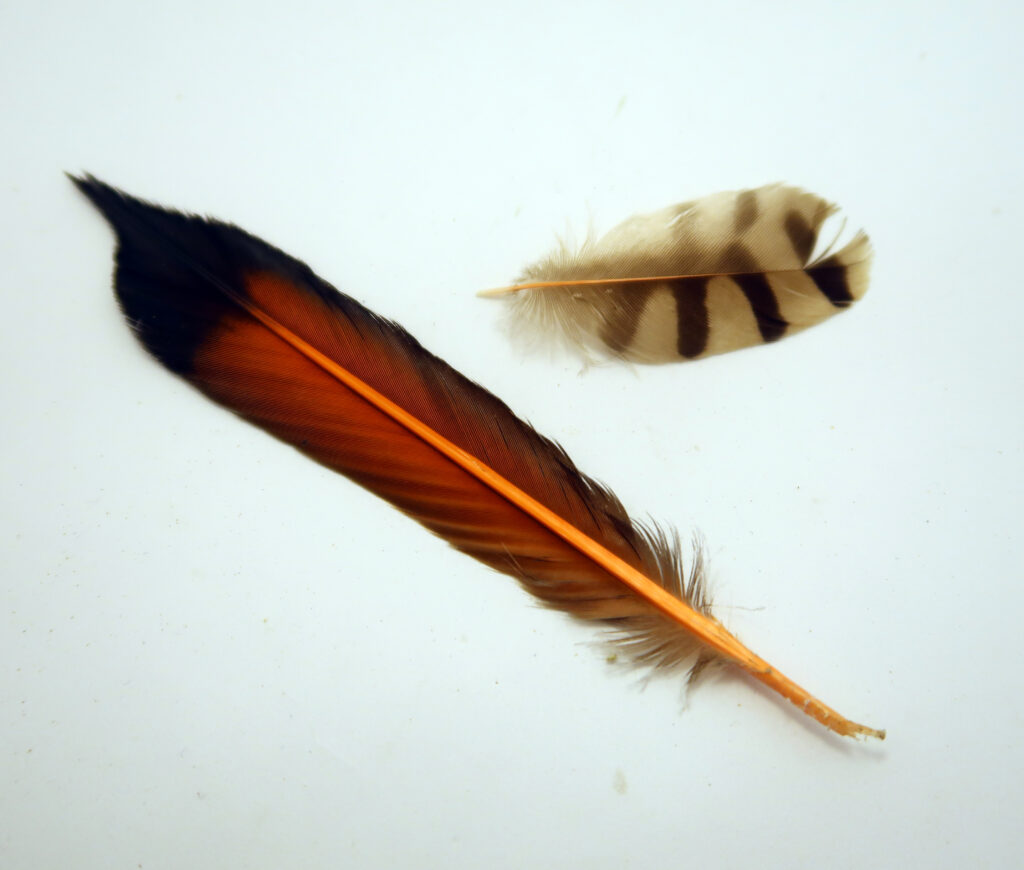
Northern Flicker tail feather (left)
& body feather (right)
(Colaptes auratus)
Northern Flickers come in two varieties yellow shafted and red shafted.
For more information and feather identification check out The Feather Atlas.
Nests & Eggs
A bird nest is the spot where birds lay their eggs, and rear their young. Every bird has their own idea of what makes the perfect nest, with each building different types, in different locations and with different materials. There are even a few species that do not use a nest at all, like the common murre! Scrap nests are the simplest type of nest, consisting of a shallow depression in soil or vegetation. Mound nests are made up of soil, branches and leaves, with the eggs are laid within the rotting mass. As the foliage decomposes it produces heat helping the eggs develop. Some birds excavate a a hole in the ground and lay their eggs in a burrow. Similarly some birds have cavity nests, which consist of a cavity in wood. Cup nests are probably the most recognizable nest; they are hemispherical with a deep depression. Platform nests are very large structures and are often used for multiple years. Pendant and sphere nests are both comprised of woven fibers, but differ in shape.
Shelled eggs are another consistent trait between all birds. Bird eggs are as varied as the birds that lay them, and they range in color, thickness, size and patterning. The default egg colour is white, due to the calcium carbonate they are made of but some have additional elements producing different colours. Songbirds in particular are known for producing colourful patterned eggs, possibly to better camouflage them. The size and shape of the egg is dependent on the size of the bird laying them. Some auks produce very pointed eggs which helps keep them from rolling off the rocky cliffs they breed on. The shell must be thick enough to withstand the weight of the parent but also thin enough for the baby hatch. Everything the chick needs to grow, other than heat and protection, are packaged up within the eggshell. The yolk of the egg holds all the nutrients the embryo needs including fats, minerals and proteins.
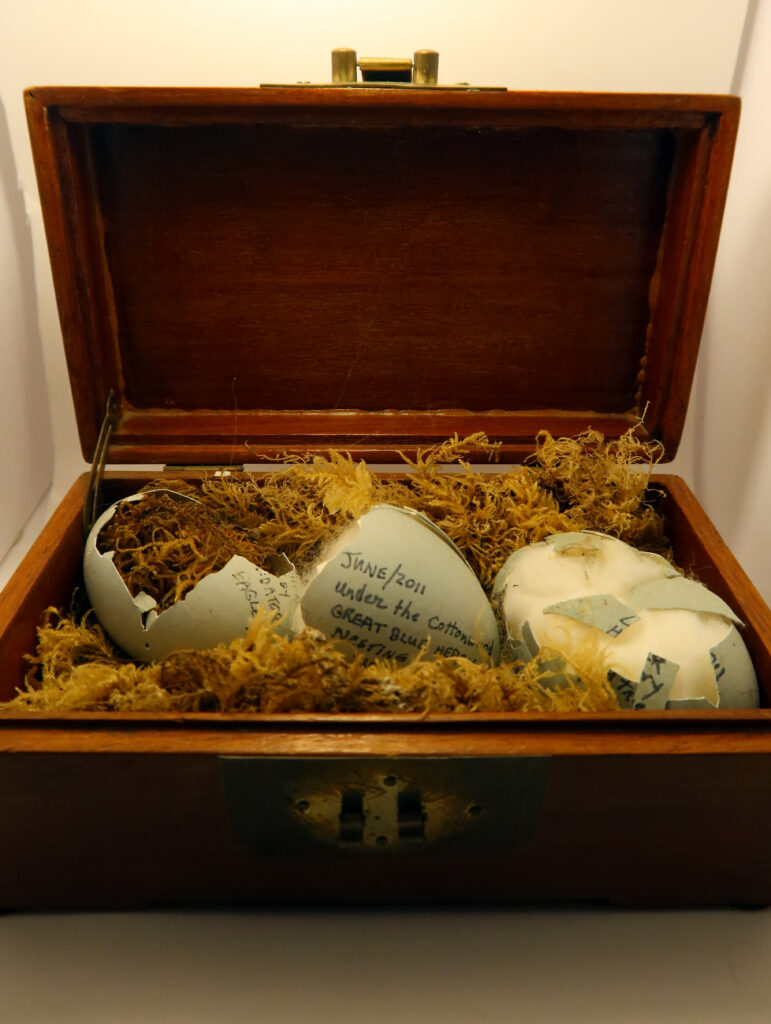
Great Blue Herron eggs
(Ardea herodias)
They typically breed in large colonies near marsh land. They will also reuse their nests for multiple years.
Chickadee egg
(Genus Poecile)
The young will stay in the nest being fed by both parents for up to three weeks.
Chickadee nest with eggs
(Genus Poecile)
Chickadees are monogamous and produce 1 to 2 broods per year.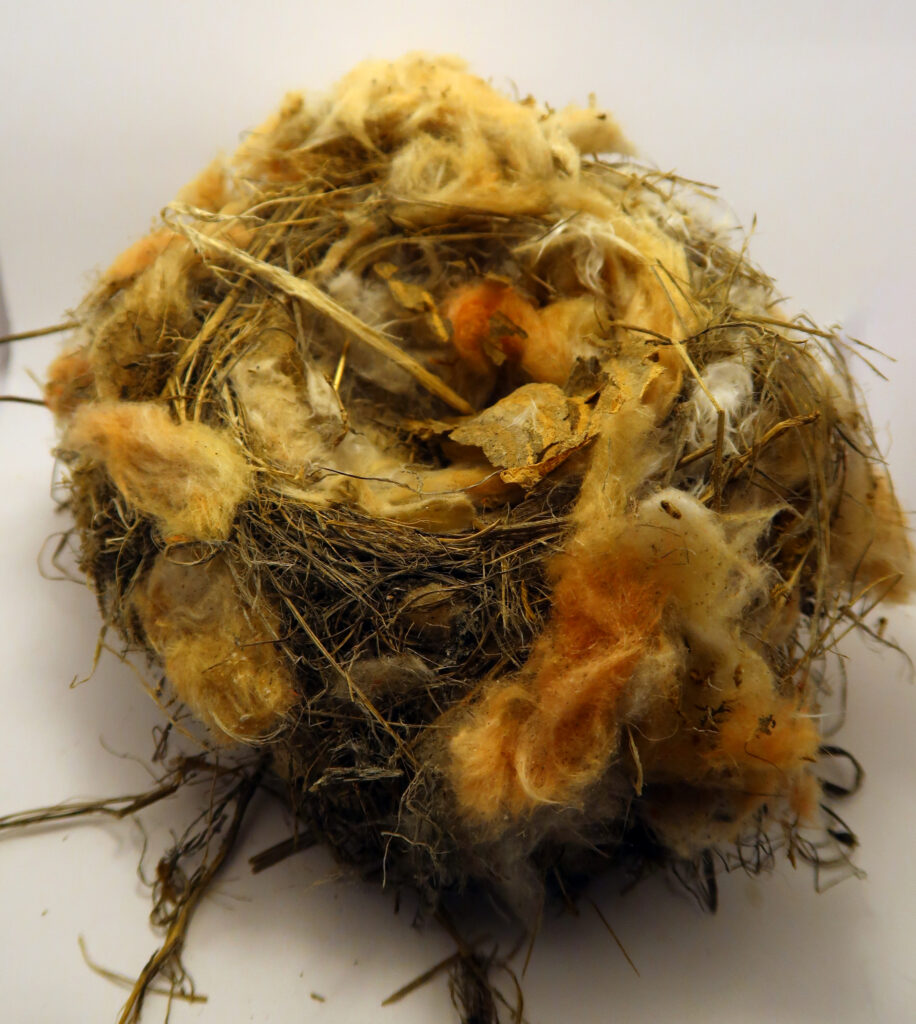
Song Bird Nest
This nest features lots of “fluff” inside the cup. This provides extra warmth for the eggs.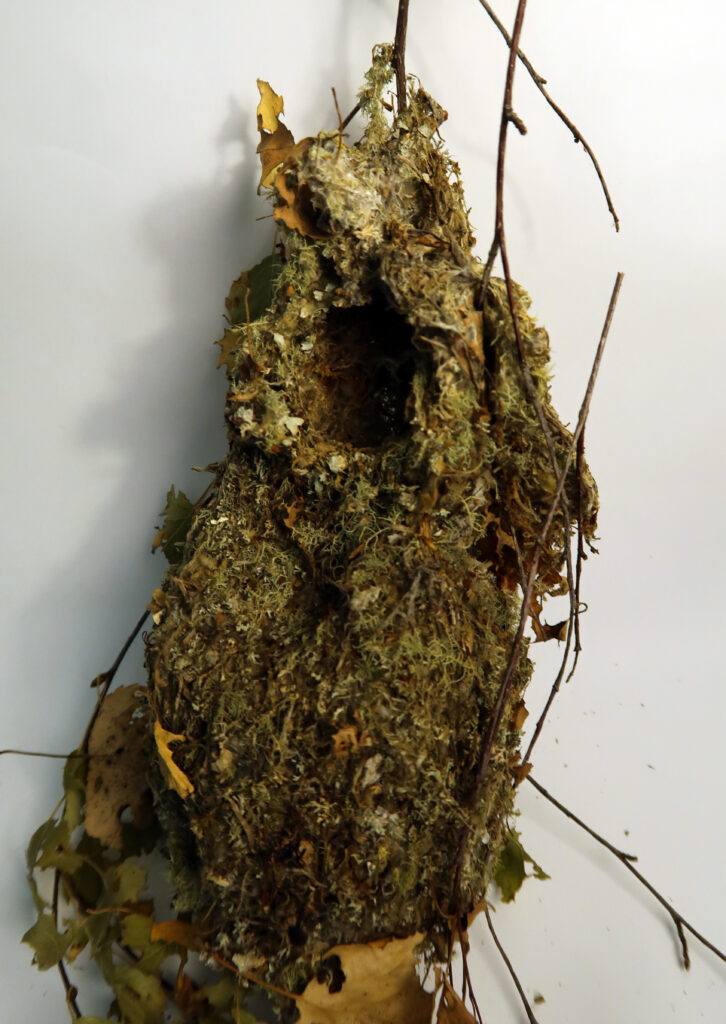
Bushtit nest
(Psaltriparus minimus)
Both parents help build these hanging nest, which can take over a month to build. The nest is made out of spider webs and plant material, and lined with softer insulating materials including feathers and fur.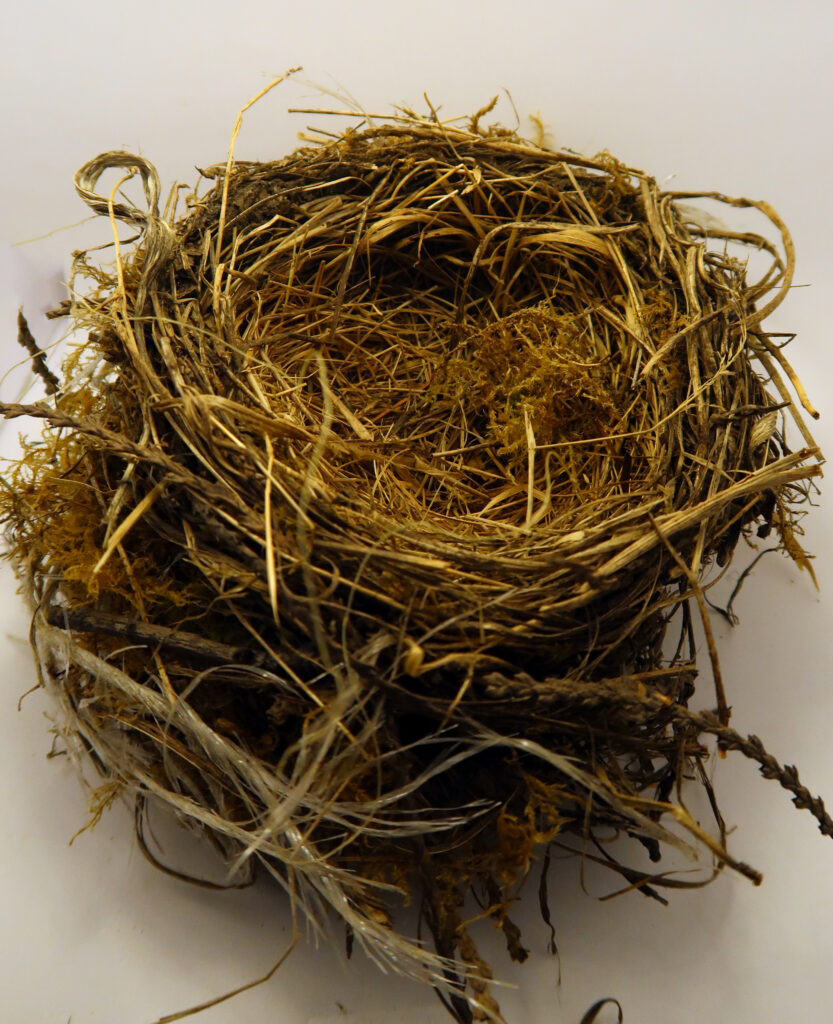
Song Bird Nest
This nest is mostly comprised of grass and other foliage.
For more information check out Birds & Blooms.
Birds
Though whole birds are not as commonly found as feathers or nests, we do have a few in the Nature House.
The Esquimalt Gorge Park attracts many different bird species, with over 30 species commonly spotted. The wide diversity of birds is supported by the various habitats in the park. The waterfront and creek create the perfect habitat for waterfowl including, mallards, swans and American wigeons. The riparian areas provide dense habitat ripe with fruit, perfect for song sparrows and finches. The pollinator meadow is frequented by Anna’s hummingbirds and purple martins. The forest behind the Nature House is home to owls, hawks and woodpeckers. Next time you are in the park keep your eyes peeled and see how many species you can spot!
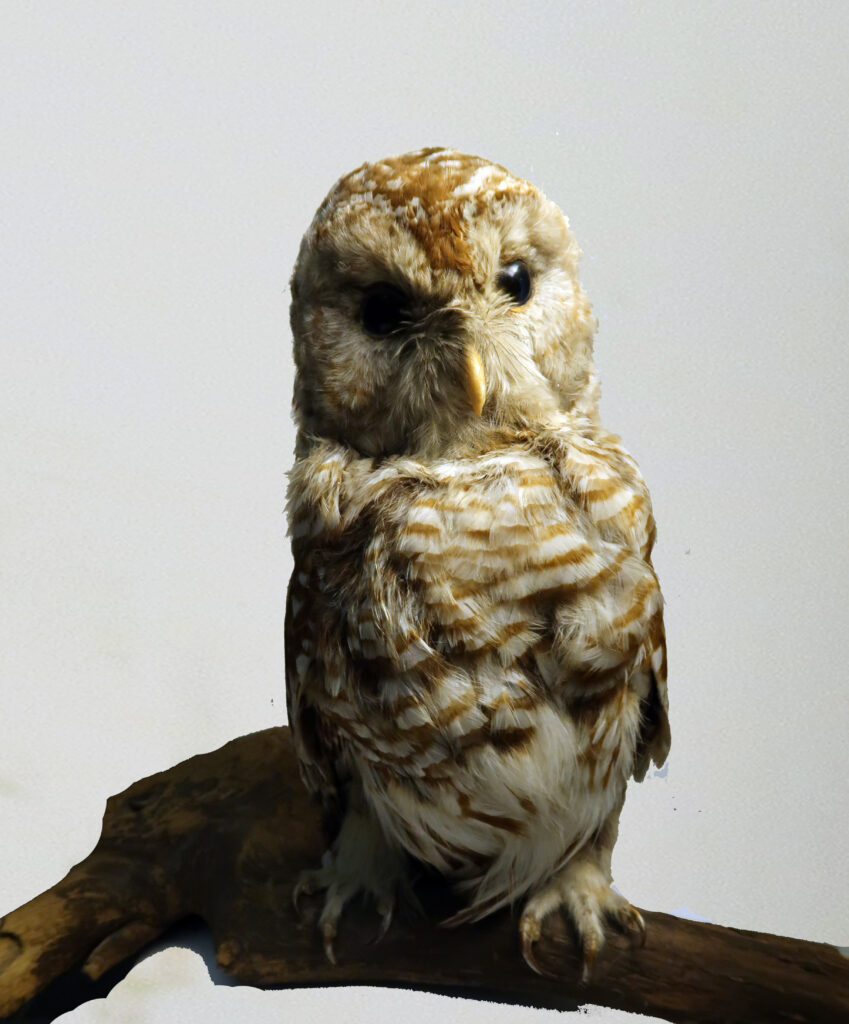
Barred Owl
(Strix varia)
Barred owls are large and stocky with rounded heads, a long rounded tail and they lack ear tufts. Originally a bird of the east coast, the barred owl has now spread through the Pacific Northwest and southward into California.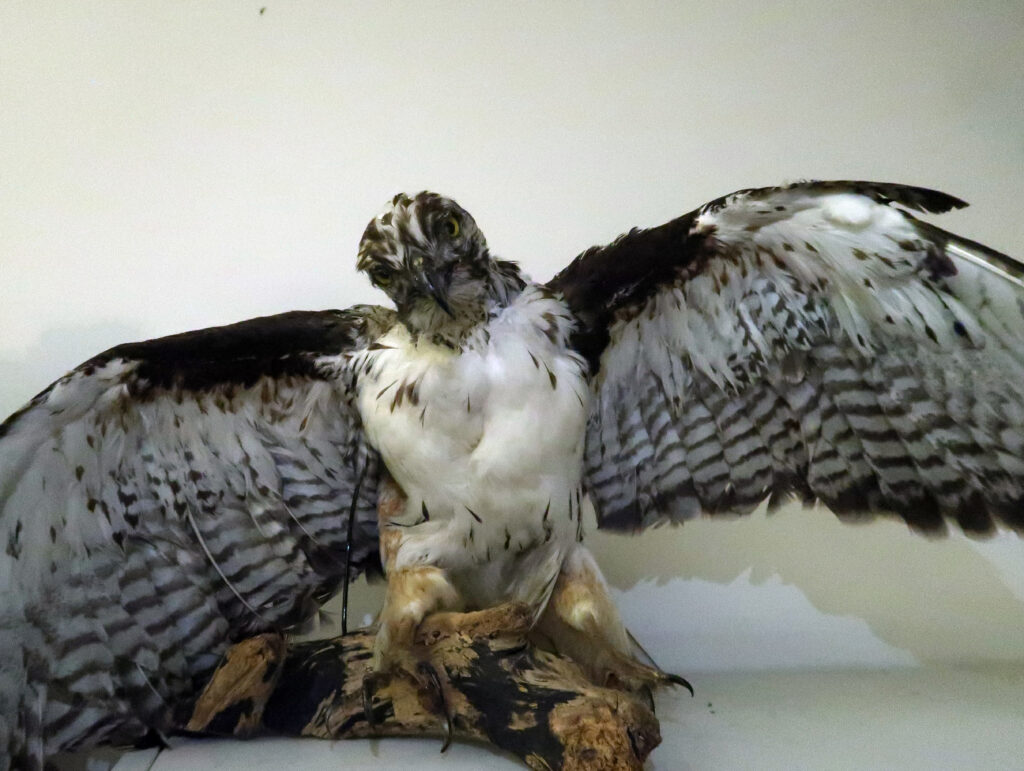
Red-tailed Hawk
(Buteo jamaicensis)
Red-tailed Hawks are rich brown from the top and pale from the bottom. They have a streaked belly and dark bars on the wings underside. The tail is usually pale on the underside and cinnamon-red on top, though in young birds it’s brown and banded.
For more information check out All About Birds.
Skulls
Bird skulls consist of five major bones, the frontal, parietal, premaxillary, nasal and mandible. Bird bones are extremely light, and the skull typically only accounts for about 1% of the total body weight. The eye occupies a large proportion of the skull, similar to a reptile skull. The bones which make up the skull are nonoverlapping, allowing them independent movement.
The beak is an external structure attached to the skull. It’s used manipulating objects, killing prey, preening and eating. Due to it’s many uses you can tell a lot about a bird by looking at it’s beak. Short slender beaks are used for insect catching, long slender curved beaks are used for nectar feeding and pointed thick beaks are used for fishing.

Raptor Skull
Raptors feed on many species of small vertebrates. All raptors have a strong curved beak with very sharp edges.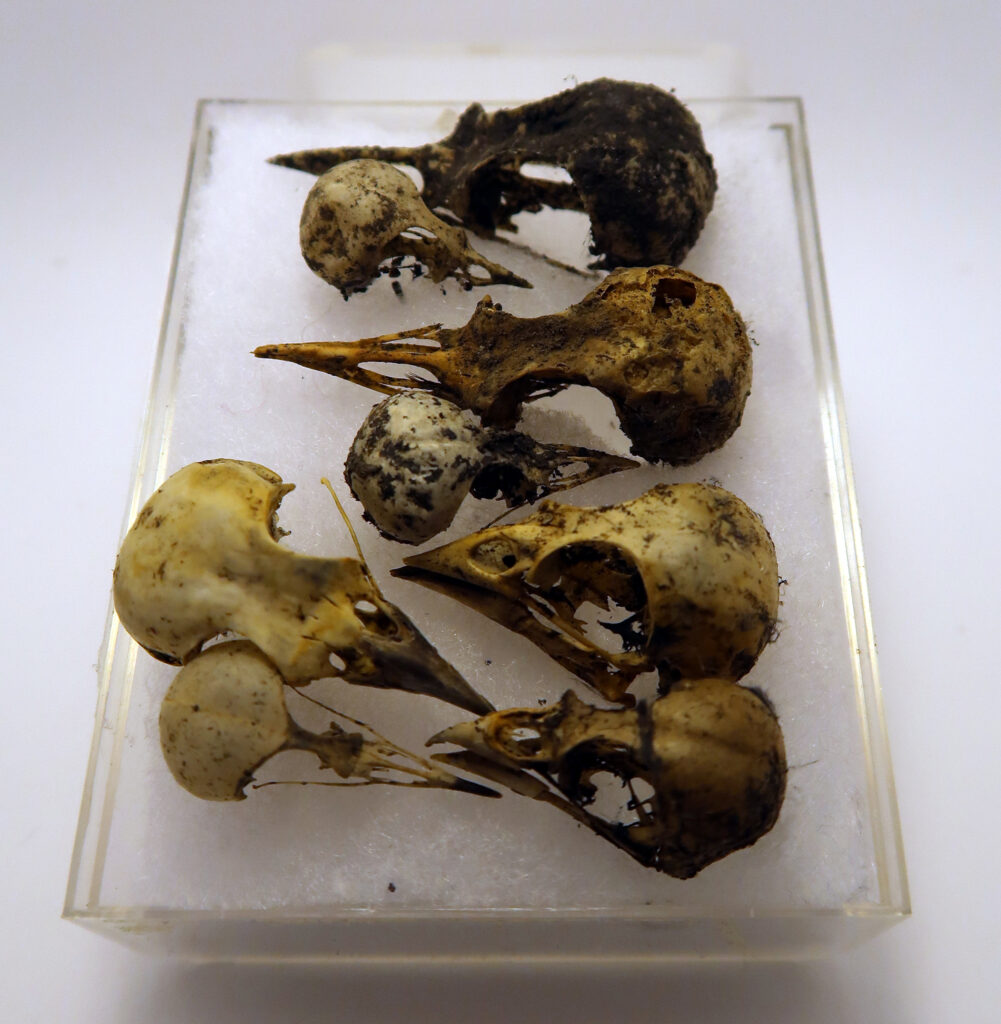
Passeri Skulls
Passeri are a suborder of birds, more commonly known as songbirds. They are typically small and feed on small insects.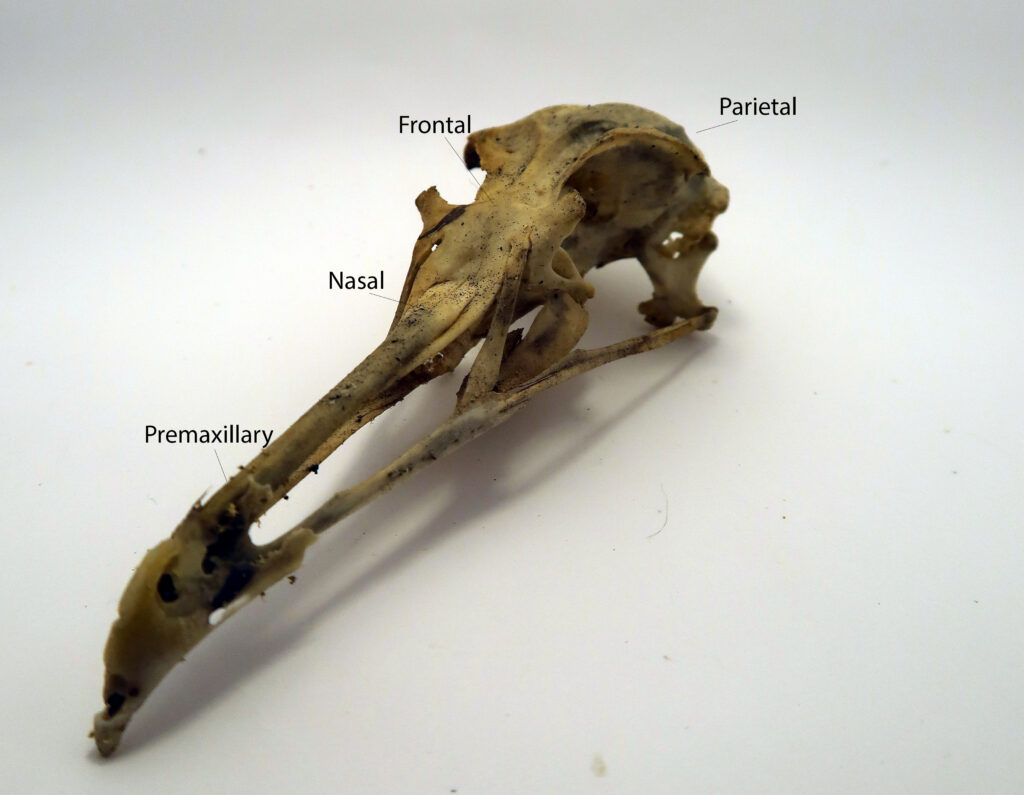
Labeled Skull
Four of the five main cranial bones are visible on this skull. The mandible (lower beak) is missing from this specimen.
For more information check out Skull Site.


